The Herald reported on March 2, 1882 – “Capt. Holler has opened a good stock of furniture in his storeroom on the Holler Corner, adjoining the M.E. Church lot on the SE.”
The Rock Hill Herald reported on June 24, 1886 – “Mr. B.J. Barber, the baker, has left Rock Hill and will now live in Summerville.”
The Herald contained an ad for Holler and Anderson on Sept. 2, 1886 – “They advertise ten car loads of the best heart pine shingles at the best prices.”
The Herald announced on April 28, 1887 – “Holler and Anderson intend on embarking on the furniture business and are awaiting the arrival of stock.”
The Herald contained an ad in the issue of June 28, 1888 from Holler and Anderson stating – “Coffins and caskets from every style and price. We can furnish any of these in wood from $5. – $75., and on six hours notice we can furnish anything in metallic or zinc up to $450. We will take entire charge of funerals in town of in the country and attend to every detail. Badges can be furnished for funeral director and pal barriers. Upholstered cooling boarding and stools are provided.”
City Directories and History: 1908 – Vienna Bakery and B.J. Barber, C.S. May – Insurance Agent (Agricultural Insurance Co.,), 1936 – Site of the Central Drug Co.,
Lot 8 North and Relocated Alley—Purchased from A. T. Black on July 13, 1854, for $108, by Dr. James M. Johnson. The date 1854 is significant in tracing the history of the lot at the northwest corner of Main and Caldwell Streets. In the year cited the merchants and tradesmen who had located in Rock Hill were locked in a struggle with The Widow White to gain right of way across her property. Their aim was to connect the Upper Land’s-ford Road with the eastern end of Main Street. The Land’s-ford Road ran nearby on the northern side of Mrs. White’s home place (present corner of Elizabeth Lane and East White Street). The only access to Main Street from the Land’s-ford Road was by means of a wagon road running west from Mrs. White’s residence to the railroad and the parallel street, Front, or Depot, Street, and thence up the street to Main. The merchants, led by Captain Jonathan N. McElwee, Jr., even petitioned the legislature in order to coerce Mrs. White into accepting their request to allow the public the right to pass over her property. The Widow White felt that she had already done her duty by the residents of the new village. She had opened the wagon road from her house (on the Land’s-ford Road) due west to the railroad line, where there was an acceptable crossing of the tracks—not a grade crossing, but a crossing nevertheless. The reader will better understand this scenario by picturing in his mind an imaginary road running from the present intersection of East White Street and Confederate Avenue to the intersection of East Main and Saluda Street, where the First Presbyterian Church is located. The path of that imaginary road was the thing desired by the petitioners. This route would connect the Land’s-ford Road with the end of Main Street. The end result of the matter was a victory for Mrs. White. It is at this stage of the controversy that A. T. Black and Dr. James M. Johnson got involved, their avowed purpose being to circumvent Mrs. White’s victory and secure a link between the two streets in question.

Images from the Old Rock Hill Collection of AFLLC – 2012
Dr. James M. Johnson had already bought from Mrs. Ann H. White one of her lots backing up to Black’s Main Street lots. The front of Johnson’s lot was located on Mrs. White’s wagon road (White Street) to the new railroad depot. A. T. Black and James M. Johnson put their heads together and came up with the idea of Black’s selling Johnson the vacant lot on Main Street that shared a common rear line with Johnson’s other lot, aforesaid. Black agreed to move his proposed twenty-foot alley from the western side of Lot 8 North to the eastern side of said lot. A portion of Lot 9 North would be added to the proposed lot, thus carving out a lot that was about 125’ (front) by 212’ (depth).
(These dimensions were to be changed in later years.) Doctor Johnson bought this custom-made piece of ground. Then he cut off a twenty-foot section from the eastern side of his lot purchased from Mrs. White. The two strips (Black’s 20’ alley and Johnson’s alley) were connected. The rudimentary beginnings of a new street (that in later years evolved into Caldwell Street). Main Street was now connected with a wagon road that led directly to the Land’s-ford Road. An interesting if insignificant sidelight may be noted here. If one examines Caldwell Street today with reference to its alignment with the general pattern of downtown streets, one sees almost at once that Caldwell does not join Main at right angles—the usual angle encountered at downtown intersections. Look at the western steps to the old post office building (on Caldwell Street). That building is aligned with the buildings on Main Street, not with Caldwell Street itself. Caldwell Street was laid off to be parallel to the eastern boundary of Mrs. A. Caldwell’s home- place lot. In other words, Caldwell Street runs from White to Main, so to speak, and not Main to White. It appears that, in this sense at least, Mrs. White had the last word! And let us not forget that the street was named for Mrs. White’s sister, Adeline (Hutchison) Caldwell, widow of Dr. David T. Caldwell of Mecklenburg County, North Carolina.
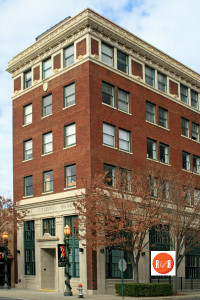
Images courtesy of photographer Bill Segars – 2011
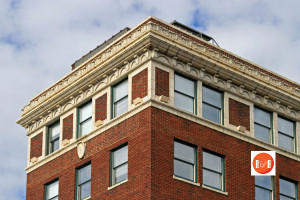
Images courtesy of photographer Bill Segars – 2011

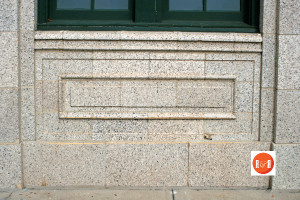
By some means not known to us today, A. T. Black came again into possession of Lot 8 North at the time of Dr. James M. Johnson’s moving to Mississippi about 1857-58. On October 1, 1868, A. T. Black sold the lot to his son Alexander Murray Black, for $350. By this time the older Black had standardized the width of the lot to fit more appropriately into his plan for Main Street lots. The width was reduced to approximately 105’. The depth, however, was only about 138-40’. He had cut off the rear portion of the lot in order to create two lots out of one. Perhaps he was following in the steps of the prosperous Broach men. (The rear portion fronted 75’ on Caldwell, with depth of 105’.)
On December 22, 1871, A. M. Black conveyed the lot to J. C. Hoke and J. T. Cline for $700. Soon, Cline sold his half interest on April 16, 1872, to A. D. Holler, for $325. 52 Finally, Hoke sold his interest to Captain Holler, for $300, on October 22, 1873. After that time that particular section of the downtown area was know as the “Holler corner.” Captain Holler, a transplanted North Carolinian and a master-builder, put his talents to use and built on 60’ of his newly acquired lot two two-story frame storehouses, side by side, with a shared stairway between the two. From that point on, these early Main Street structures were occupied by any number of businesses. It would be impossible to give a complete account of them; but we can say that furniture dealers predominated, together with dealers in farm equipment, buggies, and wagons.
Captain Holler sold the western 40’ to J. C. Hoke, for $250. What use Mr. Hoke made of the land is not known to the writer; but on November 8, 1886, he sold the lot to Octavia Owens, a Rock Hill grocer and mother of Mrs. Louise (Owens) Rhea, for $425, a price that indicates there was probably not a building on the property. On

Image showing the Holler and Anderson Buggy Company in 1888 on the corner of Caldwell and Main Street. Courtesy of the Hardin Collection – 2017
December 10, 1889, Mrs. Rhea leased the lot to the Holler and Anderson Buggy Company, for $30 annual rental. The place was used as a warehouse and storage lot for the rapidly growing manufacturing concern, which shortly became the Rock Hill Buggy Company, probably the largest concern of its type in the South in 1893.
Captain Holler realized that he was unable to maintain his work schedule as Rock Hill’s busiest contractor and still attend to buggy company affairs with and kind of regularity. He therefore sold his sixty-foot lot with the two frame storehouses thereon to Holler and Anderson Buggy Company on September 7, 1891, for $2,500. The deed to the property stated that there was located on the premises a brick blacksmith shop. Shortly thereafter, this valuable corner property was purchased by Rock Hill’s leading African American businessman and barber, J. Henry Toole, who planned to rent the property to the highest bidder. It was not to be. In the first week of June, 1897, both of the two-story structures burned to the ground, perhaps as the result of the work of an incendiary. The corner building had been the home of Holler & Anderson, aforesaid, but at the time of the fire it was occupied by Miles Johnson, saddle and harness maker and by W. G. Reid & Son as a storage room for buggies. Upstairs was B. F. Grier, who operated a paint and repair shop. The lower floor of the adjoining building was used by the Charlotte Installment Company, furniture dealers. The Methodist Church, next west to the Toole lot, was damaged by the roaring flames, the light from which could be seen from as far away as Yorkville, according to the Yorkville Enquirer. The old frame buildings were insured in the name of J. Henry Toole, but they were not fully covered, thus giving Mr. Toole a considerable loss.
As stated in our account of Lot 7 North, it was at this time that the Methodists decided to purchase the corner property and some adjacent land and then erect a new and larger church building. This decision called forth a long series of property changes at that site, most of them being arranged by Dr. J. B. Johnson:
1. The Church bought 11 ½’ from the Barber and Allen interests (to the west); also, another piece of ground off the rear of the Barber and Allen lot.
2. Mrs. Louise Owens Rhea sold her lot near the corner to the Church. In return, the Church deeded a lot of full and equal value (40’x144 ½’) to Mrs. Rhea (later that lot was occupied by Rhea-Warner).
3. J. Henry Toole conveyed his corner lot to the Church. In return, the Church deeded him a lot of approximately 46-47’. In a separate unrelated transaction in later years, Henry Toole swapped lots with the family of the late A. R Smith.

Image taken by the Mendenhall family in the 1970s.
4. J. B. Johnson had purchased the J. J. Hagins vacant lot to the rear of the proposed site of the new church building. He deeded that lot to the Church for $477.75.
In due course, the new building for the Church (a Gothic structure) was erected and occupied. The congregation continued to grow so rapidly that it was necessary to build yet another church building in 1924 (the present building of St. John’s Methodist Church). And last of all, the place where the 1897 church building had stood was occupied in 1926 by the multi-story Citizen’s Bank Building, J. W. O’Neal, president. That building still stands on the lot today and was at one time occupied by the Rock Hill National Bank. 59 [Information provided via Along the Land’s Ford Road – Vol. I, 2008 by William B. White, Jr.]
The Herald reported on March 16, 1892 – “As a drummer, J. G. Anderson is a hummer. Last week he made a trip to the lower part of the State and sold $1,921 worth of goods for the Holler & Anderson Buggy Company in six days. This is a good report, considering the ‘hard times.”
The Herald reported on March 4, 1896 – “Ausband Brothers has removed from their stand in the old Holler Building to a room in the Hutchison Block on Depot Street.” (The Herald reported on June 6, 1896 – “Mr. C.P. Ausband has rented the store room adjoining his furniture store on Railroad St., and will open a grocery.) Aug 26, 1896 – “Monday night, Mr. Ausband who keeps a store on Depot Street found an intruder who stole a few cigars and escaped out a rear window.” Sept. 12, 1896 – “Ausband Brothers are contemplating improvements to their store on Depot Street. At an early date they will begin construction of a wire and cotton mattresses in the rear of their furniture store.”
The Herald reported on April 25, 1896 – “Due to rapidly increasing business, the RH Buggy Co., will increase the size of their workshop. A new building measuring 40-75′ is now being constructed.”
The Herald reported on June 9, 1897 – “Fire destroyed the old Holler and Anderson Building, owned by Henry Toole. It was located on the corner of Main and Caldwell Streets, consisted of two buildings of wooden construction and two stories. The buildings were erected in 1871 by A.D. Holler and were formerly occupied by the Holler – Anderson Buggy Co., the current occupants at the time of the fire were: M. Johnson, Saddle and Harness; W. G. Reid and Son Storage; on the upper floor, B. F. Grier, paint and repair; and the adjoining building the Charlotte Installment Co., a furniture store and on the upper lived Creasy Walker, a colored women. Henry Toole the owner of both buildings suffered loss of about $1,600., of which $1,000. was insured in P. C. Poag’s Agency. The nearby Methodist Church nearly caught fire.”
The Herald contained an ad on Sept. 27, 1899 which stated, “On or about Oct. 1st I will open a first class bakery in the store formerly occupied by Poag and White. Having been identified with the bakery at Winthrop College for four years, I hope I may receive a share of your patronage. B.J. Barber, Manager of Vienna Bakery” (1908 City Directory states this business is at #149 East Main Street.)
On Jan. 4, 1902 the Herald reported – “Mr. S.S. Plaxico has moved his harness shop from the Henry Toole building to the stand formerly occupied by the late Miles Johnson.”
The Herald reported on May 24, 1902 – “That Dr. W.A. Pressley has rented the vacant storeroom in the Toole Building, four doors above the Herald office, and will remove his dental parlor there next month. On June 28th, has removed to the Toole Building next to the Methodist Church where he has opened a neat and attractive dental office.”
The Herald reported on Dec. 13, 1902 – “St. John’s Methodist Episcopal Church will be dedicated tomorrow. The service will be at 11 a.m., and Bishop Duncan will be present. At night the new church at Manchester will be dedicated.”
The Herald reported on Oct. 2, 1925 – “There was a fire at the Citizen’s Bank new bank building, still under construction on the corner of Caldwell and Main. A cigarette thrown on the floor being installed – highly flammable started the fire and it wrecked the ground and mezzanine floor. H.E. Caldwell of N.Y., supt. of construction for the Walter Kidde Company was badly injured and is at the Fennell Infirmary. Damage to fixtures and plaster walls was extensive. The bank had planned to move into the building in late October from their existing offices at the corner of Hampton and Main.” (Sept. 1, 1897 – “The Methodist Church was damaged in the recent fire. They will build a new one on the sight of the Holler and Anderson Building, the corner of Main and Caldwell. The lot is 85.5 ft – 140 ft. The church exchanged the old Church site with Mr. Rhea and Henry Toole for the lot on which they will build.”
The Herald reported on March 13, 1940 – “C.P. Simpson of the Green Rental Agency, announced today the sale of the Metropolitan Mutual Fire Insurance Company Building to H.H. Carroll, Rock Hill businessman. The five story building, which stands and the intersection of Main and Caldwell Streets, was formally occupied by the Citizens Bank and Trust Company is one of the most modern office buildings in the city. Mr. Carroll will assume control on April 1st.”
Click on the More Information > link found below the picture column for additional data. Also see R&R for the Citizens Building. Another sheet of information found here is that on Henry Toole, the African American barber who managed to own a considerable amount of Rock Hill’s commercial property.
Click HOME to return to the numbered site tour of Rock Hill’s downtown.
Stay Connected
Explore history, houses, and stories across S.C. Your membership provides you with updates on regional topics, information on historic research, preservation, and monthly feature articles. But remember R&R wants to hear from you and assist in preserving your own family genealogy and memorabilia.
Visit the Southern Queries – Forum to receive assistance in answering questions, discuss genealogy, and enjoy exploring preservation topics with other members. Also listed are several history and genealogical researchers for hire.
User comments welcome — post at the bottom of this page.
Please enjoy this structure and all those listed in Roots and Recall. But remember each is private property. So view them from a distance or from a public area such as the sidewalk or public road.
Do you have information to share and preserve? Family, school, church, or other older photos and stories are welcome. Send them digitally through the “Share Your Story” link, so they too might be posted on Roots and Recall.
User comments always welcome - please post at the bottom of this page.


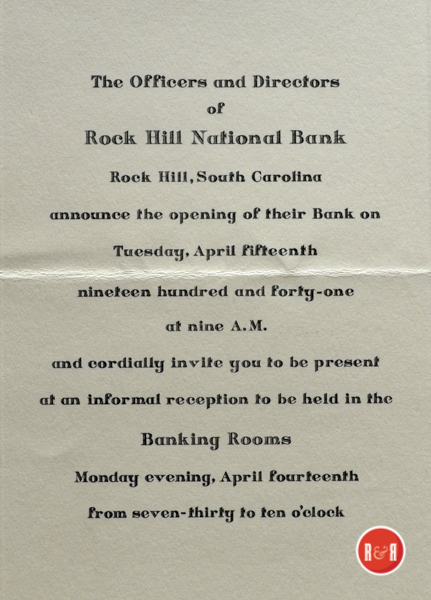
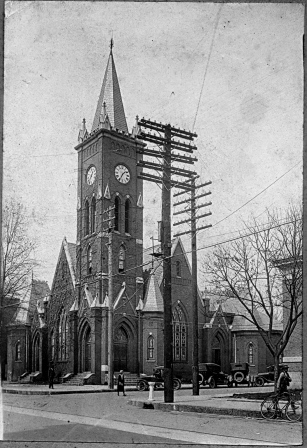

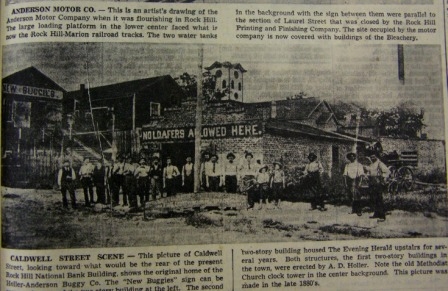




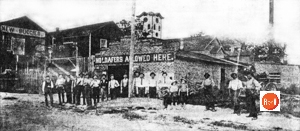
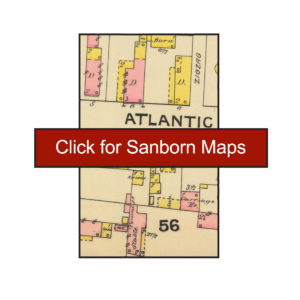
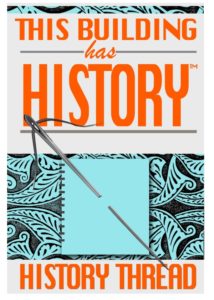



Share Your Comments & Feedback: